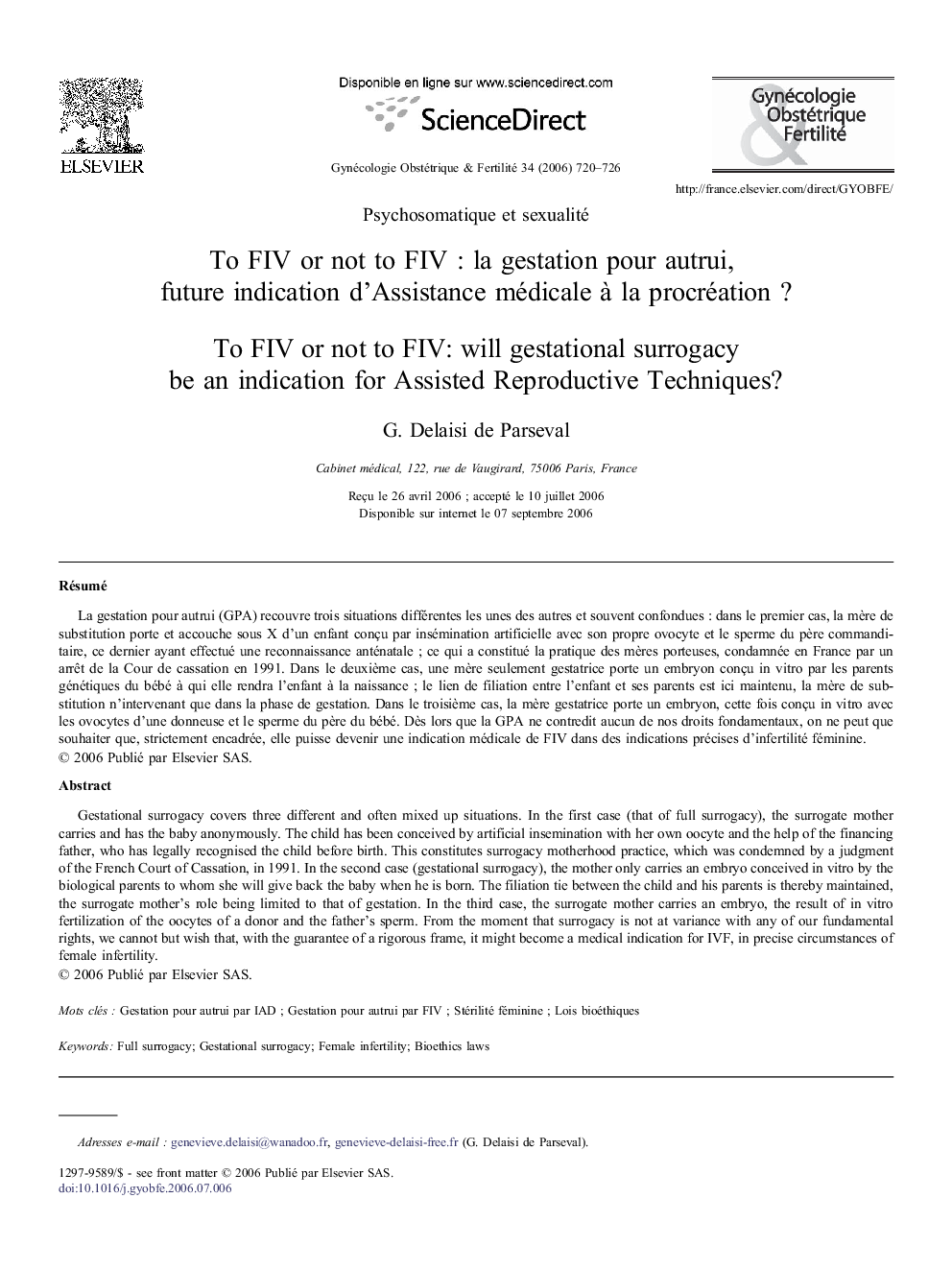| کد مقاله | کد نشریه | سال انتشار | مقاله انگلیسی | نسخه تمام متن |
|---|---|---|---|---|
| 3950864 | 1254813 | 2006 | 7 صفحه PDF | دانلود رایگان |

RésuméLa gestation pour autrui (GPA) recouvre trois situations différentes les unes des autres et souvent confondues : dans le premier cas, la mère de substitution porte et accouche sous X d'un enfant conçu par insémination artificielle avec son propre ovocyte et le sperme du père commanditaire, ce dernier ayant effectué une reconnaissance anténatale ; ce qui a constitué la pratique des mères porteuses, condamnée en France par un arrêt de la Cour de cassation en 1991. Dans le deuxième cas, une mère seulement gestatrice porte un embryon conçu in vitro par les parents génétiques du bébé à qui elle rendra l'enfant à la naissance ; le lien de filiation entre l'enfant et ses parents est ici maintenu, la mère de substitution n'intervenant que dans la phase de gestation. Dans le troisième cas, la mère gestatrice porte un embryon, cette fois conçu in vitro avec les ovocytes d'une donneuse et le sperme du père du bébé. Dès lors que la GPA ne contredit aucun de nos droits fondamentaux, on ne peut que souhaiter que, strictement encadrée, elle puisse devenir une indication médicale de FIV dans des indications précises d'infertilité féminine.
Gestational surrogacy covers three different and often mixed up situations. In the first case (that of full surrogacy), the surrogate mother carries and has the baby anonymously. The child has been conceived by artificial insemination with her own oocyte and the help of the financing father, who has legally recognised the child before birth. This constitutes surrogacy motherhood practice, which was condemned by a judgment of the French Court of Cassation, in 1991. In the second case (gestational surrogacy), the mother only carries an embryo conceived in vitro by the biological parents to whom she will give back the baby when he is born. The filiation tie between the child and his parents is thereby maintained, the surrogate mother's role being limited to that of gestation. In the third case, the surrogate mother carries an embryo, the result of in vitro fertilization of the oocytes of a donor and the father's sperm. From the moment that surrogacy is not at variance with any of our fundamental rights, we cannot but wish that, with the guarantee of a rigorous frame, it might become a medical indication for IVF, in precise circumstances of female infertility.
Journal: Gynécologie Obstétrique & Fertilité - Volume 34, Issue 9, September 2006, Pages 720–726